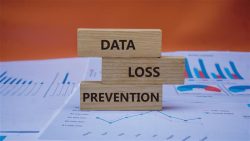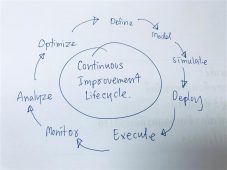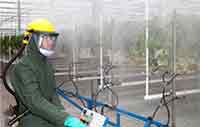How Audit-Driven Data Can Improve Food Safety
By Kerry Bridges
It doesn’t take a food safety expert to understand how increasingly complex our food supply chain has become. More than ever, ingredients and raw materials are sourced from around the world and flow through the supply chain to expanding global markets, satisfying both diverse customers and increasingly demanding regulatory requirements. By now, many of us are well aware of the horse meat scandal in Europe, where foods advertised as containing beef were found to actually include undeclared horse meat. It’s just one example of the ever-increasing complexity of the global food market, and the risks that accompany it.
 Of course, there are many benefits to global sourcing, but with those benefits come many risks as well. All food companies in the supply chain (grower, processer, shipper, packer, broker, etc.) need to take preventive measures to address these risks.
Of course, there are many benefits to global sourcing, but with those benefits come many risks as well. All food companies in the supply chain (grower, processer, shipper, packer, broker, etc.) need to take preventive measures to address these risks.
Managing the Benefits and Risks
One of the best ways an organization can pledge a culture of food safety is to know and manage their supply base. Buyers within the processing, retail and foodservice industries are tasked with not just knowing their own suppliers, but the secondary suppliers of those main suppliers. This can be a daunting task. On top of that, third-party food safety audits and their data requirements add yet another layer of complexity, and time: There are a multitude of audits available, but not many that are driven by data.
More and more, we see how technology can help move food safety forward. Seeing the data, for example, can enable an organization to see visible results and make timely, data-driven decisions about its supply chain. It is important to emphasize that an audit alone does not manage a supply chain. The analytics and data visualizations that can be generated from the entire supply chain of audits are what helps provide the extra insight where it is needed. By viewing the entire supply chain through the data, issues such as consecutive non-conformances, gaps in accreditation and product/region-specific issues are exposed. Without insight from the data, these problems may be missed.
Reading the Audit Data
We can illustrate these insights in a number of ways. One of the best ways is to pick a question in an audit and see how the audited organizations performed. Figure 1 demonstrates this by showing audits performed each month over a two-year period, as well as the percentage of those audits that received a particular non-conformance rating. In this example, provided by PrimusGFS, the question chosen addressed whether an organization is using an accredited food laboratory. The arrows indicate a spike in the data, which, when further investigated, identifies the following details: 1) an organization with consecutive non-conformances, 2) a region- and commodity-specific phenomenon that improved in the second year and 3) a new issue for an organization which appeared in the second year that was not there in the first year.
Moving Forward
By using data and analytics to monitor what is going on in the entire third-party auditing ecosystem, an organization can identify problems and trends not easily identified before. The data can then be used to not only improve the entire system but to measure the impact of that improvement. Insight gained from data is invaluable to every participant in the supply chain. Integrating third-party audit data could help identify the necessary action to help improve an organization’s food safety supply chain.
About the Author
Kerry Bridges is the PrimusGFS Audit Scheme Director at Azzule Systems. PrimusGFS is a GFSI-recognized food safety audit primarily focused on the agricultural sector. It is owned and integrated with Azzule Systems, a leading provider of global data management solutions throughout all levels of the supply chain.
To have more articles like this emailed to your inbox, become a GFSR Member today!

-
 FeaturedRisk management
The Cost of a Breach: What a Cyberattack Could Mean for Food Safety Recalls
FeaturedRisk management
The Cost of a Breach: What a Cyberattack Could Mean for Food Safety Recalls
-
 FeaturedRisk management
Securing the Food Chain: How ISO/IEC 27001 Strengthens Cybersecurity
FeaturedRisk management
Securing the Food Chain: How ISO/IEC 27001 Strengthens Cybersecurity
-
 FeaturedRisk management
Revolutionizing Food Safety Training: Breaking Out of the “Check-the-Box” Mentality
FeaturedRisk management
Revolutionizing Food Safety Training: Breaking Out of the “Check-the-Box” Mentality
-
 GFSI Standards
GFSI 2025: Building Trust, Tech-Forward Solutions, and Global Unity in Food Safety
GFSI Standards
GFSI 2025: Building Trust, Tech-Forward Solutions, and Global Unity in Food Safety
-
 FeaturedFood Safety
Integrated Pest Management: Strategies to Protect Your Brand’s Reputation
FeaturedFood Safety
Integrated Pest Management: Strategies to Protect Your Brand’s Reputation
-
 FeaturedFood Safety Culture & Training
No Open Door Policy: Challenges That Impact Pest Control in Food Processing Plants
FeaturedFood Safety Culture & Training
No Open Door Policy: Challenges That Impact Pest Control in Food Processing Plants


